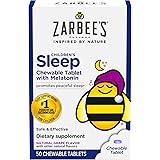The Evolving World of Sleeping Pads: Solving Old Problems, Creating New Ones for Outdoor Comfort
For many outdoor enthusiasts, a truly comfortable night’s sleep under the stars can feel like an elusive dream. The video above delves into the speaker’s extensive journey, trying “25, 30 different sleeping pads” over the years, all in the quest for ultimate outdoor comfort. While modern sleeping pads have undoubtedly revolutionized the camping experience, particularly regarding cushioning, they haven’t come without their own set of challenges.
This article expands on the insights shared in the video, exploring how today’s advanced camping sleeping pads offer unprecedented comfort, yet often introduce new considerations regarding size, inflation, and compatibility with other essential gear like tents. We’ll examine the key innovations and the trade-offs involved, helping you navigate the complex world of sleeping pads for your next adventure.
The Quest for Comfort: A Personal Journey to Better Outdoor Sleep
The speaker highlights a universal pain point for campers: achieving a comfortable night’s sleep. He attributes “90% of that” comfort to the sleeping pad itself, a sentiment many can relate to. This emphasis underscores the critical role a quality sleeping pad plays, often more than just a sleeping bag, in ensuring restorative rest outdoors.
Historically, early camping pads, like the “three-quarter length, ex-army issue self-inflating pad” mentioned, were minimalist. They offered only “about 25 millimeters thick” of insulation and cushioning. While functional for their time, these basic pads often left campers feeling the hard ground and struggling with cold spots, making a truly restful night a rarity.
Decoding Modern Sleeping Pad Designs
The evolution of the camping sleeping pad has been remarkable, driven by a demand for lighter, more compact, and supremely comfortable options. Today’s pads offer a range of features designed to enhance your outdoor sleeping experience.
From Thin to Thick: The Evolution of Sleeping Pads
Modern inflatable sleeping pads boast significantly increased thickness, typically ranging “between 2 and 4 inches.” This substantial lift off the ground provides crucial cushioning, adapting to the contours of your body and minimizing pressure points. Imagine sinking into a cloud-like surface instead of wrestling with uneven terrain; this is the promise of a thicker pad.
Furthermore, this increased loft creates a larger air barrier, which is key for insulation. A thicker pad, when properly insulated, can dramatically improve warmth retention, making your nights warmer and more enjoyable even in colder conditions.
Width Matters: Mummy vs. Rectangular Pads
Early inflatable pads, such as the speaker’s “Exped Hyperlite,” were often “20 inches wide.” While compact, this narrow design meant arms could easily fall off the pad, disrupting sleep. As the speaker discovered, wider pads are “much more comfortable,” offering ample space for natural movement.
Modern sleeping pads now come in various widths, with 25-inch options becoming increasingly popular. While traditional “mummy-style pads” save weight and pack size by tapering at the head and foot, full-width rectangular pads allow for spreading out. Imagine stretching your legs or rolling onto your side without feeling constricted; a wider pad provides this freedom, especially beneficial for back sleepers or those with broader shoulders.
Baffle Systems: Horizontal, Vertical, and Air Sprung Pockets
The internal structure of a sleeping pad, known as its baffle system, profoundly impacts comfort and insulation. The video highlights a crucial distinction: “horizontal” versus “vertical baffles.” The speaker, a side sleeper, found “vertical baffles” much more comfortable as his “hips can sink in a little bit better.” This allows for better spinal alignment, preventing “dead arm” syndrome.
Conversely, “horizontal baffles,” often smaller, can offer more localized support but may create less even weight distribution. Beyond these, the “Air Sprung Pocket” design, exemplified by the Sea to Summit pad, represents another leap. These individual pockets are designed to “relieve pressure points,” conforming to the body’s curves. Imagine each pocket acting like a mini-spring, adapting to your hips, elbows, and shoulders for personalized comfort. This innovative design often results in a more stable and supportive sleep surface, catering to individual pressure points for truly restorative rest.
Each baffle type also impacts how insulation is distributed within the pad. Vertical baffles, with longer individual chambers, can sometimes lead to cold spots if the insulation shifts. Horizontal baffles, with smaller, more numerous chambers, tend to keep insulation more evenly distributed, potentially reducing cold spots. The air sprung pocket design also excels at even insulation distribution, thanks to its compartmentalized structure.
The Unforeseen Challenges of Advanced Sleeping Pads
While modern sleeping pads offer unparalleled comfort, their advanced features introduce new practical considerations that can impact your overall outdoor experience.
Inflation Frustrations: Pumps, Bags, and Breath
One of the most significant challenges of thicker, wider sleeping pads is inflation. Manually blowing up a large pad “would take an age,” as the speaker notes, describing it as too much “hard work” and a quick headache inducer. Imagine reaching camp after a strenuous hike, only to face the Herculean task of inflating a massive air mattress with your lungs; it’s hardly ideal.
To combat this, various inflation methods have emerged. “Pump bags” are simple, lightweight solutions, using ambient air to fill the pad efficiently. Electric pumps, while convenient and fast, introduce extra weight and the need for charging, a potential issue on “multi-day hikes.” The noise these pumps generate is another consideration, disrupting the tranquility of a wilderness campsite.
The Space Dilemma: Bigger Pads, Smaller Tents
The increased dimensions of modern pads, while enhancing comfort, can create a “dilemma” for those using “smaller one-man tents” or “bivvy camping.” A thicker, wider pad can take up “way too much room,” as the speaker demonstrates with his Therm-a-Rest Neoloft pad pushing against the tent walls. Imagine waking up with your face pressed against a damp tent inner, or your sleeping bag soaked from condensation.
This space constriction reduces crucial “headroom” and internal living space, making simple tasks like cooking or changing clothes difficult. More critically, it pushes the tent’s inner wall against the outer fly, creating “condensation” issues and potentially leading to a “wet bag.” This highlights a fundamental design conflict: the drive for maximal pad comfort clashing with the minimalist design of many backpacking shelters.
The Noise Factor & Material Innovation
Older sleeping pads, particularly those with crinkly internal reflective layers, were notoriously noisy. Every minor movement could result in a loud crinkling sound, disturbing not only your sleep but also that of anyone nearby. The speaker vividly illustrates this, saying, “Every time you move around, that’s what you’ve got going on.”
Fortunately, manufacturers have made significant strides in material innovation. Newer pads, utilizing “soft, stretchy material,” are “so much quieter.” This not only enhances the sleeping experience but also contributes to a more peaceful campsite environment. These new fabrics are also “more forgiving,” reducing “hot spots” where pressure builds, leading to improved overall comfort. These advancements also contribute to a pad’s R-value, a measure of its thermal resistance, ensuring better insulation without the annoying rustle.
Navigating Your Sleeping Pad Choices
Choosing the right sleeping pad involves balancing numerous factors to match your specific outdoor adventures. It’s about finding the sweet spot where comfort meets practicality.
Finding Your Ideal Sleeping Pad: Balancing Comfort and Practicality
When selecting your camping sleeping pad, consider your primary use. For “bivvy camping” or minimalist trips where space and weight are paramount, a more compact, potentially less thick pad might be necessary. For car camping or multi-person tents where space is less restricted, a luxurious, wider, and thicker pad might be the ideal choice for maximum comfort.
Your sleep style is also crucial. Side sleepers often benefit from vertical baffles or air sprung pockets that allow hips and shoulders to sink in comfortably. Back sleepers might prioritize overall width for spreading out. Furthermore, consider the R-value of the pad, which indicates its insulation capability. Higher R-values are essential for colder conditions, keeping you warm from the ground up.
Finally, budget plays a role. While high-end pads can be “200 pound plus,” the speaker notes that “some of the Chinese ones now” offer “really good” technology at a lower price point. While brand reputation and warranty (like Therm-a-Rest’s reliable replacements) are valuable, exploring these newer, more affordable options can provide excellent value.
The Future of Outdoor Comfort: Innovations and Integration
The speaker’s “dilemma” highlights a key area for future innovation: better integration between sleeping pad and tent design. He expresses a desire for manufacturers to use “these technologies with the materials in some smaller pads” suitable for bivvy camping. He also calls for tent manufacturers to “start thinking about what kind of sleeping pad people are gonna use,” suggesting a need for slightly more internal space in minimalist shelters.
Imagine a “1+” tent, like the “Durston X-Dome,” which offers a little extra room for gear and comfort, even if it means carrying “an extra 100, 200 g.” This small increase in weight can dramatically improve the user experience, moving beyond the bare minimum to truly enhance outdoor comfort. The ongoing evolution of camping sleeping pads will undoubtedly continue to prioritize both advanced materials and thoughtful design integration, aiming to eliminate these current trade-offs for a truly perfect night’s sleep in the wilderness.








